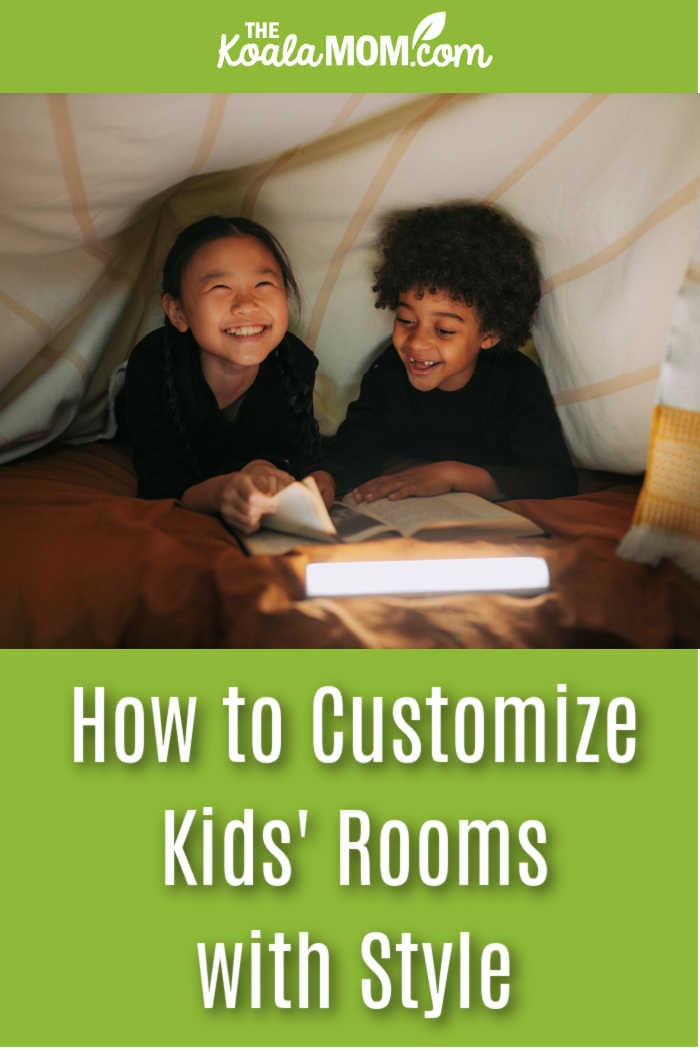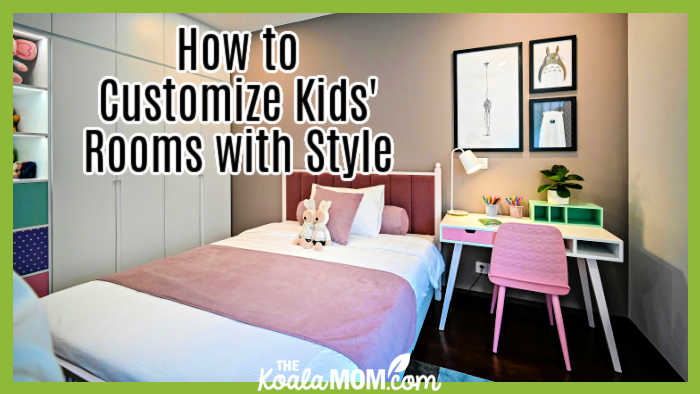When it comes to creating a memorable and inspiring space for children, the sky really is the limit. Customizing a kid’s room with style does not only mean filling it with their favorite colors or cartoon characters. It’s about creating an environment that reflects their personality, fosters creativity, and stimulates learning. It’s about combining practicality with fun, and functionality with imagination.
This guide provides innovative ideas and practical tips for designing a room that your child will adore, while also being a place where they can play, learn, and dream.

Choosing the Right Color Scheme
The color palette of your child’s room plays a pivotal role in setting the room’s mood and energy. Incorporate your child’s favorite colors, but also consider the psychological effects of colors. For instance, blue induces calmness, yellow stimulates intelligence, and green enhances serenity.
Involve your child in the color-picking process to ensure the room truly represents their taste and personality. Balance brighter hues with neutral tones to prevent the room from becoming overwhelming. Remember, the goal is to create a harmonious space that inspires creativity without compromising on tranquility.
My kids had a lot of fun playing with the color schemes in their new rooms after our recent move. My oldest went with lavender for her walls and dark purple for the trim. Her two younger sisters chose bright blue and white for their room; the walls are all blue while the trim and furniture are white. The younger two children went even more colorful, with one purple wall, one blue wall, one sea green wall, and one feature wallpapered wall.
One way to play with your color scheme is to create a mood board for your child’s room. This lets you see how the different colors / textures / ideas work together. For example, Christina created a “white and bright” mood board for her girls’ playroom by digitally arranging the elements she liked together. This can help you visualize how the finished room will look and decide which elements to use (or not).
Personalized Decor
Your child’s room should reflect their interests and hobbies. Instead of buying generic decor, consider creating personalized pieces that are unique to your child. For example, frame their artwork or display their favorite books on floating shelves. You could also create a chalkboard wall where your child can freely draw and express themselves. Incorporate elements like initials, monograms, or name signs for a touch of personalization.
Keep in mind that the decor should not only be aesthetically pleasing but also functional and age-appropriate. While you may be able to find some timeless elements, realize that other elements may change as your child grows and changes.
Incorporating Metal Prints for Photos
Metal prints offer a contemporary twist to display your child’s favorite photos or pieces of art. They add a touch of sophistication and resilience, with vibrant colors and unrivaled durability. These prints can be of family outings, memorable holidays, or even a snapshot of your child’s favorite superhero.
Metal prints are not only visually striking but also serve as a lasting memory that can withstand the test of time. Namely, the people from ShinyPrints suggest getting your metal prints from the right place can ensure that you end up with a perfected print and design.
Remember to position these prints at an appropriate height for your child, so they can enjoy and interact with these cherished memories. The right metal prints can significantly add to the overall aesthetic of your child’s room. Consider matching the colors in the prints to the colors on the walls—in fact, you may want to chose the print first and then use that to set your color scheme.
Practical Furniture
When choosing furniture for your child’s room, think long-term instead of just the present. Avoid buying furniture solely based on its cuteness factor as kids tend to outgrow them quickly. Instead, opt for functional and versatile pieces that can adapt as your child grows. For example, many cribs nowadays can convert into stylish a twin bed for your child. Bunk beds for younger kids sharing a room can be separated into twin beds for older kids who have moved into their own rooms.
Invest in a sturdy bed, a spacious dresser, and multi-purpose storage solutions to keep the room organized. Consider adding a study desk or reading nook to encourage learning and creativity. My kids are huge fans of their bean bag chairs, which are easy to move about their room and add a bright spot of color and texture as well.
Don’t forget to make the furniture fun! Incorporate playful elements like colors, patterns, or unique shapes to add a touch of whimsy. For example, a bunk bed with a slide can add an exciting twist to bedtime.
Imaginative Themes
Aim to create an immersive environment by incorporating imaginative themes into the room’s design. Think of your child’s interests and passions, whether it be space, the ocean, or fairytales. Then, use these themes as inspiration for wall decals, bedding, and accessories. This not only adds a fun touch to the room but also encourages imaginative play and learning. As your child grows, you can easily switch up the theme to reflect their evolving interests.
Some other ideas for themes include a sports theme with personalized jerseys and equipment, a jungle theme with plush animals and plant prints, or an outer space theme with glow-in-the-dark stars and planetary decor.
Safety First
Safety should always be a top priority when designing a child’s room. Use non-toxic paint, secure furniture to the walls, and avoid placing small or sharp objects within reach. Choose durable and easy-to-clean materials for furniture and flooring. Consider adding soft carpets or foam mats to prevent accidents while also adding a cozy touch to the room.
Regularly check for any hazards and make necessary changes as your child grows. In some cases, it may be beneficial to involve a professional in the safety planning and execution of your child’s room design.

Customizing a kid’s room with style is about creating a space that reflects their personality, fosters creativity, and promotes learning. It involves thoughtful color choices, personalized decor, practical furniture, imaginative themes, and prioritizing safety. By using these tips and ideas, you can create a room that your child will love and cherish for years to come. Remember, the key is to have fun and involve your child in the design process as much as possible.
When done right, a kid’s room can truly be a magical place for them to play, learn, and dream. Keep exploring and discovering new ways to make your child’s room truly one-of-a-kind.

No Responses Yet